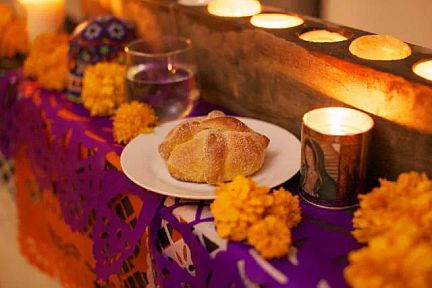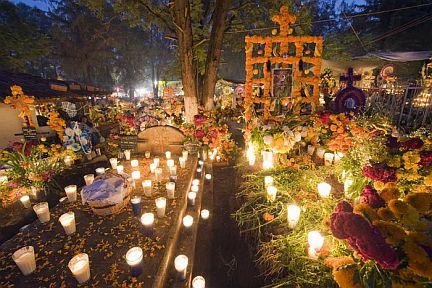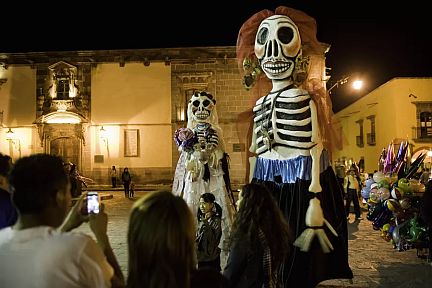Day of the Dead in Mexico: The Complete Guide
News Category: News, Community News, and General Discussion
-
Published October 2, 2022
By Suzanne Barbezat
Day of the Dead (known as Día de Muertos in Spanish) is celebrated in Mexico between October 31st and November 2nd. On this holiday, Mexicans remember and honor their deceased loved ones. It’s not a gloomy or morbid occasion, rather it is a festive and colorful holiday celebrating the lives of those who have passed on. Mexicans visit cemeteries, decorate the graves and spend time there, in the presence of their deceased friends and family members. They also make elaborately decorated altars (called ofrendas) in their homes to welcome the spirits.
Because of its importance as a defining aspect of Mexican culture and the unique aspects of the celebration which have been passed down through generations, Mexico’s indigenous festivity dedicated to the dead was recognized by UNESCO as part of the intangible cultural heritage of humanity in 2008.
Merging of Cultures
In Pre-Hispanic times, the dead were buried close to family homes (often in a tomb underneath the central patio of the house) and there was great emphasis on maintaining ties with deceased ancestors, who were believed to continue to exist on a different plane. With the arrival of the Spaniards and Catholicism, All Souls’ and All Saints’ Day practices were incorporated into Pre-Hispanic beliefs and customs and the holiday came to be celebrated as we know it today.The belief behind Day of the Dead practices is that spirits return to the world of the living for one day of the year to be with their families. It is said that the spirits of babies and children who have died (called angelitos, “little angels”) arrive on October 31st at midnight, spend an entire day with their families and then leave. Adults come the following day. Learn more about the origins of the holiday.

Offerings for the Spirits
The spirits are greeted with offerings of special foods and things that they enjoyed when they were alive. These are laid out on an altar in the family home. It is believed that the spirits consume the essence and the aroma of the foods that are offered. When the spirits depart, the living consumes the food and share it with their family, friends, and neighbors.Other items that are placed on the altar include sugar skulls, often with the person’s name inscribed on the top, pan de Muertos, a special bread that is made especially for the season, and cempasuchil (marigolds) which bloom at this time of year and lend a special fragrance to the altar.
In the Cemeteries
In ancient times, people were buried close to their family homes and there was no need to have separate grave decorations and home altars, these were together in one place. Now that the dead are buried away from their homes, graves are decorated with the idea that the dead return there first. In some villages, flower petals are laid in paths from the cemetery to the home so that the spirits will be able to find their way. In some communities, it is customary to spend the whole night in the cemetery, and people make a party of it, having a picnic supper, playing music, talking and drinking through the night.
Day of the Dead and Halloween
Día de los Muertos and Halloween have some common features, but they are distinct holidays. They both come from early cultures’ beliefs about death that later mixed with Christianity. They are both based on the idea that the spirits return at that time of year. Customs around Halloween seem to stem from the idea that the spirits were malevolent (children were disguised so that they wouldn’t be harmed), whereas in Day of the Dead festivities, the spirits are joyfully welcomed as family members that one hasn’t seen in a year.Día de los Muertos continues to change, and a mixing of cultures and customs continues to occur. Halloween festivities are becoming more prevalent in Mexico: masks and costumes are sold in the markets alongside sugar skulls and pan de Muertos, costume contests are held along with altar contests in schools, and some children dress up in costumes and go trick-or-treating (“pedir Muertos”).
-


Leave a Reply